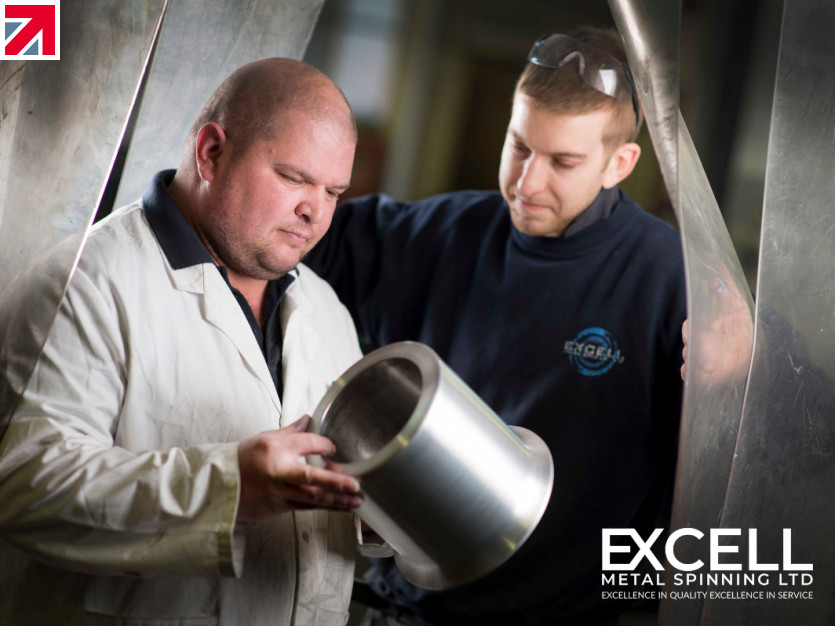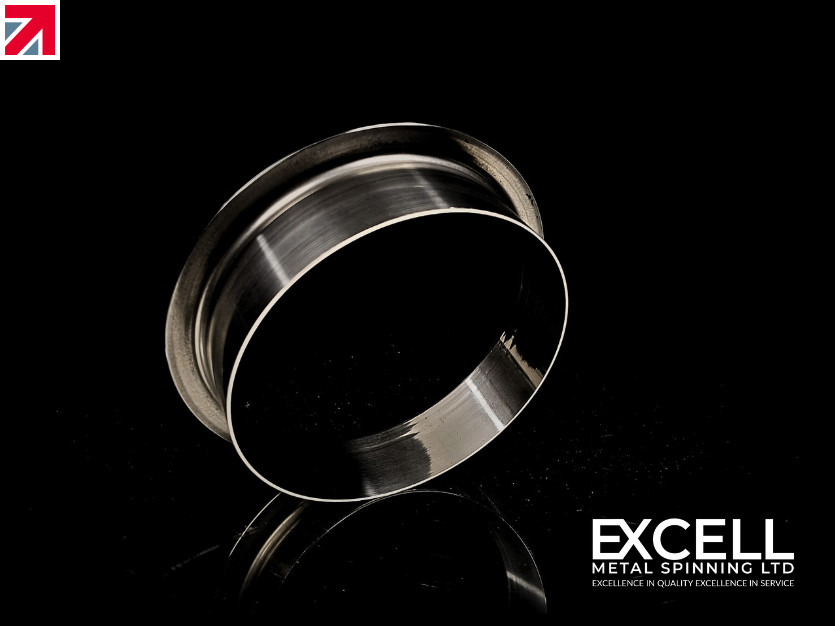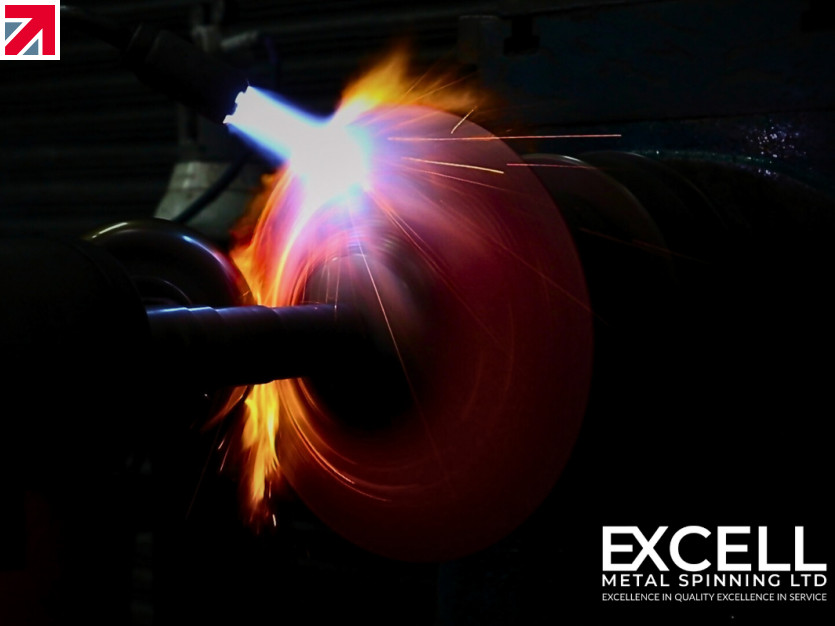Metal Spinning is an ancient craft that continues to benefit the supply chains of industries of today. It is a process of forming metal discs into hollow, axi-symmetrical components ranging from lampshades to war heads.
Until recently, metal spinning fell under the radar and in doing so many misconceptions of the process were formed. These misconceptions often cloud the judgement of designers who sometimes fail to realise the cost savings and capabilities metal spinning has to offer.
In this article, we take a look at six common misconceptions of metal spinning that we have come across during our time serving industry. These range from costs, capacity, quality and materials. At the end of this article, you will have a better understand of the metal spinning process and can use this knowledge to create more informed decisions during the design phase of your components. Let’s take a closer look at them!
Misconception 1: “Metal Spinning is Limited to Simple Shapes”
The first misconception that is often made when discussing metal spinning is the belief it is limited to simple shapes. This myth likely stems from its historical applications and the nature of the process itself. Traditionally, manufacturers would use metal spinning to produce basic, symmetrical shapes like bowls, cones and cylinders.
However, with the emergence of CNC Machinery, the capabilities of this metal forming process have been significantly expanded. Through automation, CNC machines allow for precise control over the spinning process, unlocking the ability to create intricate and complex shapes originally thought impossible. At least from a design viewpoint.
Through CNC technology, new possibilities have been made available to industries, particularly within automotive, aerospace and lighting. As a result, metal spinning is fast becoming the go-to method for complex and high precision components.
That is not to say that complex shapes cannot be achieved by hand. In fact, much of the potential realised from CNCs have enabled new techniques to be adopted by hand spinners. Many examples and case studies can be found on our website including the Florio designed by Artist David Harber. Examples like these highlight how complex shapes can be produced using either traditional or automated techniques to create flawless wonders.
With a better understanding of the capabilities of metal spinning, designers and project managers alike can appreciate its true potential as a versatile manufacturing process. Whether for low-volume prototypes or high-volume production, metal spinning continues to evolve, driven by new innovative applications.
Misconception 2: “It is Only Suitable for Thin-Gauge Metals”
Another inaccurate viewpoint of metal spinning can be seen in the belief that this metal forming process is limited to thin gauge materials. This belief overlooks the versatility of metal spinning and in doing so, designers fail to grasp the potential benefits for their supply chains.
In fact, metal spinning is not confined to thin materials. Depending on the application, thicknesses can range from 0.5mm to 120mm. Furthermore, these thicknesses are determined by the equipment and power available to make the metal flow. At Excell for example, we have successfully spun a range of metals in varying degrees of thicknesses. Our capabilities are aided by the fact we maintain one of the largest hand spinning departments in the UK, complimented by one of the largest fleets of CNCs and hydro powered assistance.
It is true that the common thicknesses seen within metal spinning range between 0.6mm to 1.6mm. This likely being the reason for the misconstrued outlook of metal spinning’s capabilities.
The choice of metal thickness largely depends on influences such as component strength and functionality. Where higher strength and durability are required, especially within aerospace, thicker materials are often used. On the other hand, some industries require components to be lightweight without compromising structural integrity. Therefore, thinner materials would be more suited. The component application largely determines the appropriate material thickness in this instance.
Addressing this misconception, we can better appreciate metal spinning’s flexibility and its ability to address a diverse range of manufacturing needs. It continues to be versatile and a reliable manufacturing method, whether for lightweight components or heavy duty parts.
Misconception 3: “Metal Spinning is a High-Cost Process”
There are some that believe metal spinning is inherently a high-cost process. This likely stems from the fact that specialised equipment an skilled labour is required. However, this view overlooks the broader context in which metal spinning operates.
There is a stark contrast between metal spinning and other metal forming processes, particularly pressing or machining. In fact, metal spinning can be highly cost-effective against these processes. For instance, metal spinning often requires fewer raw materials, produces less waste which subsequently leads to lower material costs.
Tooling costs in metal spinning are also generally lower than those used for pressing/stamping. It is often why we see customers opting for metal spinning in their approach to find a cost effective solution for their components.
In addition to this, metal spinning can produce complex shapes quickly and efficiently. This is especially true when comparing against machining which can often be time-consuming and labour-intensive.
There are of course many factors that influence the overall costs associated with the metal spinning process. Namely the complexity of the shape. The more simple a shape design, the quicker and cheaper it is to produce. Furthermore, the type of material also influences costs/ Common materials like aluminium are less expensive than specialised alloys for example. Businesses can also benefit from economies of scale through high volume production in order to reduce unit costs. That’s not to say metal spinning isn’t a cost effective solution for small production volumes. In fact, the high costs of stamping can be prohibitive to projects, and the low costs associated with metal spinning offer a more viable solution.
This misconception can easily be debunked, and having a better understanding of these factors will ensure decision makers can identify a cost-effective solution with metal spinning.
Misconception 4: “Metal Spinning is Limited in Material Options”
Another common misconception some have placed on the metal spinning process is that it is limited in material options. This is of course untrue and in reality, metal spinning can accommodate a wide range of materials. Let’s take a look at some examples;
Aluminium
Known for its lightweight and excellent corrosion resistance, aluminium is frequently used in the Aerospace and Automotive Industries. It is also a highly conductive material making it ideal for electrical applications. At Excell Metal Spinning, we assisted ODQA Renewable Energies by using aluminium for their components. These spinnings would later be used to assist with their mission to create renewable energy by concentrating solar power/heat (CSP/H). You can read a case study on this here.
Brass
Brass is an alloy of Copper and Zinc and is a favoured material due to its machinability and corrosion resistance. It is commonly used to create musical instruments, decorative pieces and plumbing fixtures. We have metal spun brass for homeware applications such as these bowls for Grace Souky. We also used Brass to metal spin the globe piece for the William Hill World Darts Championship Trophy in addition to the Finial on display in Woking’s Peace Garden.
Steel
Steel offers high strength and durability and is a very versatile material in the construction, automotive and cookware industries. Its ability to withstand high stress makes it suitable for structural components. In fact, Branwell Brown’s clock frames were metal spun using mild steel by our very our metal spinners!
Stainless Steel
Stainless steel is known for its excellent corrosion resistance and strength. It is particularly useful for components used in the medical industry, kitchenware and chemical processing equipment. Its hygienic properties make it a preferred choice in the food and pharma industries. Many examples of our work can be found on our website that covers a range of stainless steel components. These include those made using grades 304 and 316 in particular.
Metal Spinning is considered a versatile manufacturing process which is able to address the needs of various industry sectors. Its ability to work with a wide range of materials is an important factor that aids in its versatility. By leveraging the properties of different materials, high-quality, durable components can be tailored to specific applications.
Misconception 5: “Metal Spinning Produces a Low-Quality Finish”
The fifth misconception we have come across about metal spinning, is that it always produces low-quality finishes. Contrary to this belief, metal spinning can achieve high-quality finishes, and this is very much dependence on a number of factors.
First and foremost is the type of tooling used for metal spinning, which significantly impacts the final finish of the component. MDF wood tooling for example is a cheap material, often favoured for low-volume production components. However, due to the properties of MDF, the wood compresses under the strain of metal spinning and results in a somewhat bumpy surface finish. In comparison, precision-engineered steel tools ensure smooth and consistent surfaces, reducing the need for extensive post-processing. Spending a little more on tooling makes a drastic difference to the quality finish of components.
Secondly, the techniques used, especially those of advanced spinning techniques like CNC spinning, also determines the level of finish. CNC technology allows for precise control over the process resulting in uniform and high-quality finishes on components. Furthermore, optimising the speed and feed rates during the spinning process can minimise surface roughness and improve overall finish quality.
Lubrications reduces friction and heat, preventing surface defects and helps achieve smoother finishes. Of course, post-processing treatments can work hand in hand with metal spinning. Mechanical or chemical polishing can further enhance the surface finish, making it suitable for aesthetic and functional applications. Protective coatings like plating or anodising add durability, in addition to improve overall appearance.
Leveraging these factors, metal spinning can meet industry’s stringent standards. Its ability to deliver both functional and visually appealing results is further evidence of metal spinning’s versatility.
Misconception 6: “Metal Spinning is Limited in Production Volume”
The sixth and final misconception we have seen made about metal spinning is that it is only suitable for low-volume production. However, this belief fails to recognise the significant advancements within the field that have enhanced capabilities. Modern metal spinning can indeed be scaled up to meet higher production demands, making it once again a versatile and efficient manufacturing process.
There are several factors behind Metal Spinning’s scalability. First and foremost has been the advancements in spinning machines which have played a crucial role. Modern day machinery are equipped with sophisticated controls and automation features allowing for precise and repeatable operations. Modern day machinery can handle larger volumes of material with consistent quality.
In addition, automation has further revolutionised metal spinning adding increased production capacity and reducing labour costs. Complex spinning operations can be performed with high accuracy and efficiency which has significantly boosted productivity. Automation also ensures uniformity and maintains high standards of quality even in large-scale production.
Finally the integration of CAD / CAM technologies has further streamlined the metal spinning process. Production processes as a result have been optimised and error minimised resulting in efficient, large scale production.
The viewpoint that metal spinning is limited to low-volume production is outdated. Modern advancements in spinning, automation and digital technology has enabled metal spinning to meet high production demands. Moreover, it can do so whilst maintaining exceptional quality standards.
Conclusion
It can be concluded that metal spinning is a versatile and cost-effective manufacturing process that debunks several misconceptions. It is not limited to simple shapes or thin-gauge, and with modern advancements, metal spinning can cater for complex designs and a wide range of materials. Contrary to beliefs about high costs, metal spinning can be highly economical, especially in comparison to other metal forming processes. It offers a variety of material options and can achieve high-quality finishes with the right tooling and techniques. Additionally, metal spinning is scalable for both low and high-volume production, making it suitable for diverse industrial applications.
Explore the full potential of metal spinning on our website at www.excellmetalspinning.com. Alternatively, get in touch with us today via email at sales@excellmetalspinning.com for more information.
Find out more about Excell Metal Spinning Ltd on their member profile page here
Member-created content 1 year ago | From members




